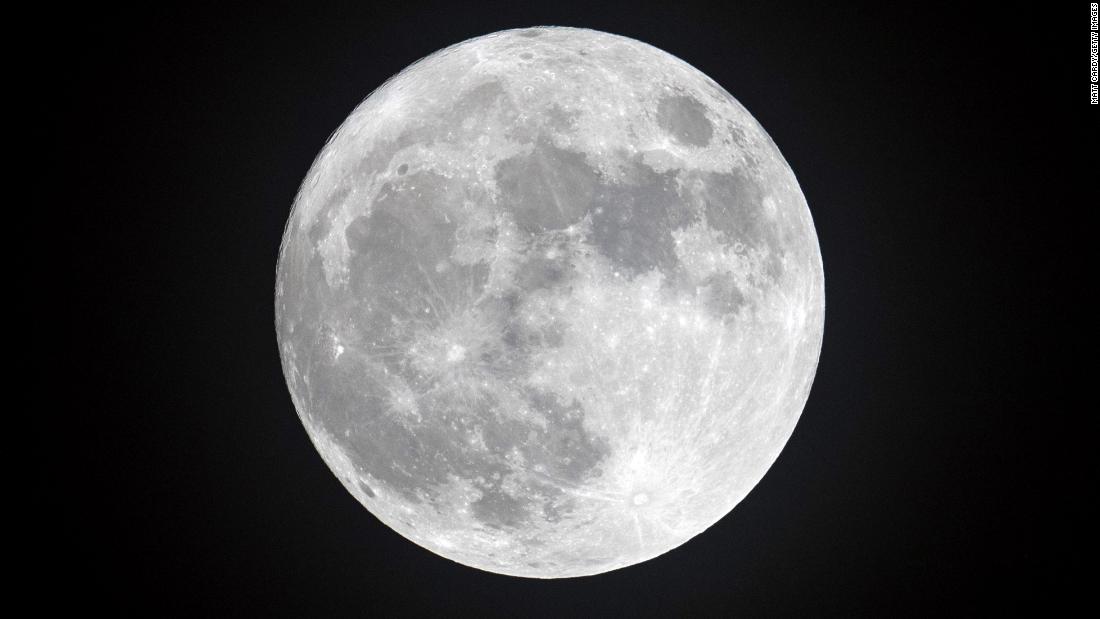A particular training to travel to the Moon 0:55
(CNN) --
A rocket expected to collide with the moon on March 4 was misidentified as a SpaceX Falcon rocket stage and instead likely came from a past Chinese lunar mission, according to NASA.
The object that is now about to collide with the Moon was first made public by Bill Gray, an independent researcher focused on orbital dynamics and developer of astronomical software.
He identified it in 2015 as the second stage of a SpaceX Falcon rocket, used that same year to launch the US Deep Space Climate Observatory, or DSCOVR.
A booster rocket could crash into the Moon in the coming weeks
The object, initially named WE0913A by asteroid watchers, had passed by the moon two days after DSCOVR's launch, he said.
"We came to accept the second-stage identification as correct. The object was about as bright as expected, and had appeared at the expected time and was moving in a reasonable orbit," Gray said on his website.
His assessment was widely accepted by other space experts and by NASA, which said it was monitoring the rocket's trajectory.
a new identification
However, over the weekend, Gray said he had gotten the object's origin wrong after contacting Jon Giorgini of NASA's Jet Propulsion Laboratory, which doesn't track space debris but does track space debris. many active spacecraft, including the DSCOVR.
advertising
"Jon pointed out that JPL's Horizons system showed that DSCOVR's trajectory didn't come particularly close to the Moon. It would be a bit strange if the second stage passed right in front of the Moon, while DSCOVR was in another part of the sky. There's always some gap, but this one was suspiciously wide," Gray said.
"Analysis led by the Center for Near-Earth Object Studies at NASA's Jet Propulsion Laboratory indicates that the object expected to impact the far side of the Moon on March 4 is likely the Chinese booster Chang 'e 5-T1 launched in 2014," according to a NASA statement released Monday.
Saturn's ice moon could be a potentially habitable 'stealth' ocean world
"This is not a SpaceX Falcon 9 second stage from a mission in 2015 as previously reported. This update is the result of analysis of the object's orbits in 2016 - 2017."
Gray said he subsequently reviewed his data and now came up with a different explanation: The object was the third stage of China's Long March 3C rocket used to launch its lunar orbiter in 2014.
The rocket stage is expected to hit the moon at 7:26 a.m. ET on March 4.
However, the impact will occur on the far side of the Moon and will not be visible from Earth.
The rocket will probably disintegrate on impact and create a crater 10 to 20 meters in diameter.
Need for official control of space debris
Jonathan McDowell, an astronomer at the Harvard-Smithsonian Center for Astrophysics, said identifying space debris "is never easy" in deep space orbit, but said Gray's new identification was probably correct.
"I would give at least an 80% and maybe a 90% chance."
He explained that "it's especially hard for these things in the chaotic orbits of deep space, where you pick something up several years after it was last seen and try to go back to match a known mission."
McDowell said the confusion over the identity of the rocket stage highlighted the need for NASA and other government agencies to keep a closer eye on deep space debris, rather than relying on the limited resources of individuals and academics.
What were those traces that lit up the night sky of Mexico?
0:58
There are 30 to 50 lost deep-space objects, such as the rocket stage, that have been missing for years, but no space agency has systematically tracked space debris that far from Earth, he said.
"It's not like LEO (low Earth orbit) material, where traffic is high, so the debris is a hazard to other spacecraft. But you might think it's a good idea to know where we've dropped stuff."
He added: "It's not a very high priority, but you'd think the world could hire at least one person to get this right, and maybe require space agencies to make their deep space trajectories public."
In the future, more spacecraft will enter this type of orbit, Gray said, and keeping "outer space clean" would have to be considered.
There are simple steps government agencies and rocket launchers could take, such as making the latest known orbital data public.
RocketMoon




/cloudfront-eu-central-1.images.arcpublishing.com/prisa/ZLW56GYGEBEJLPNDSNPUK2NJZE.jpg)


